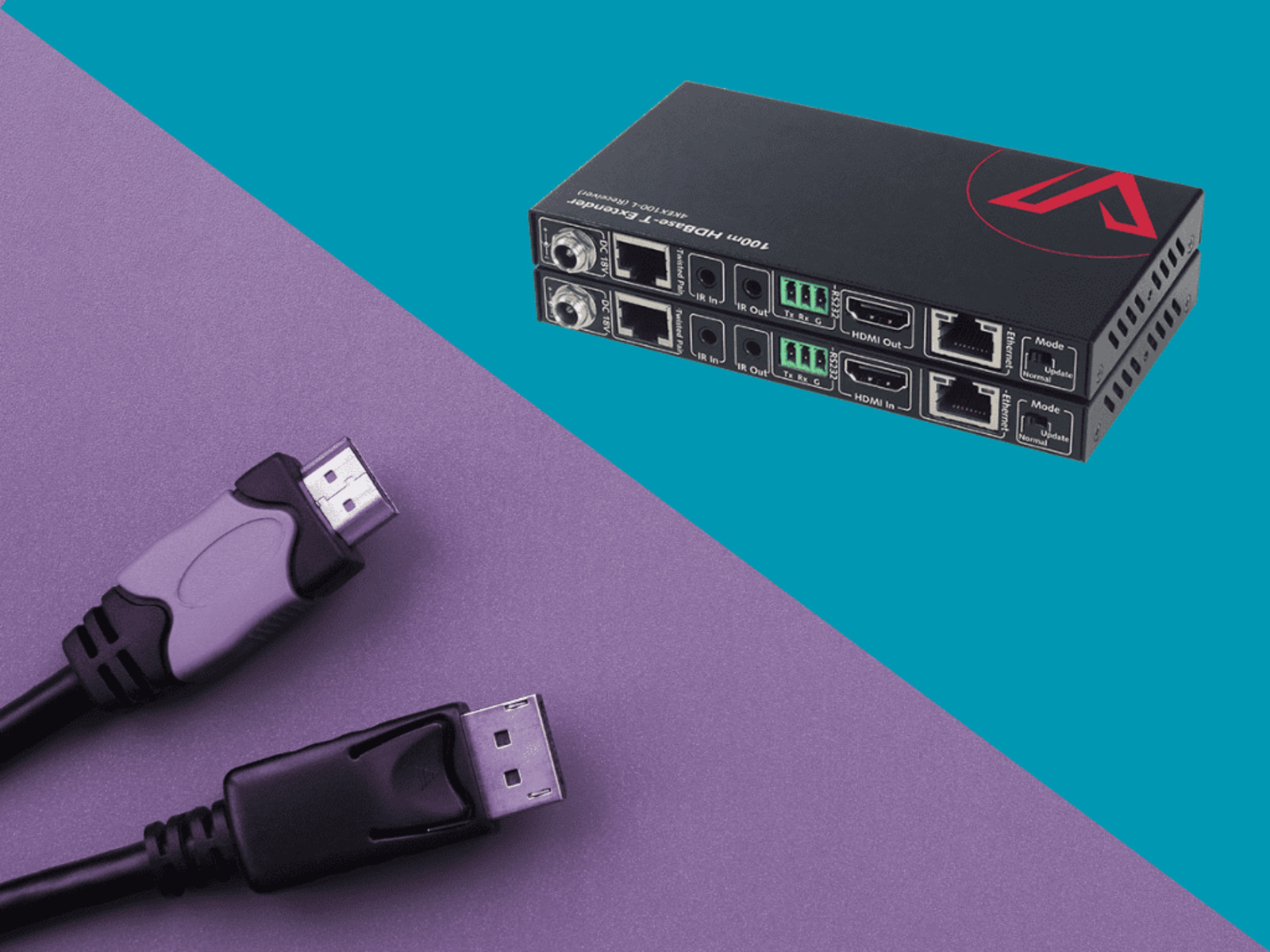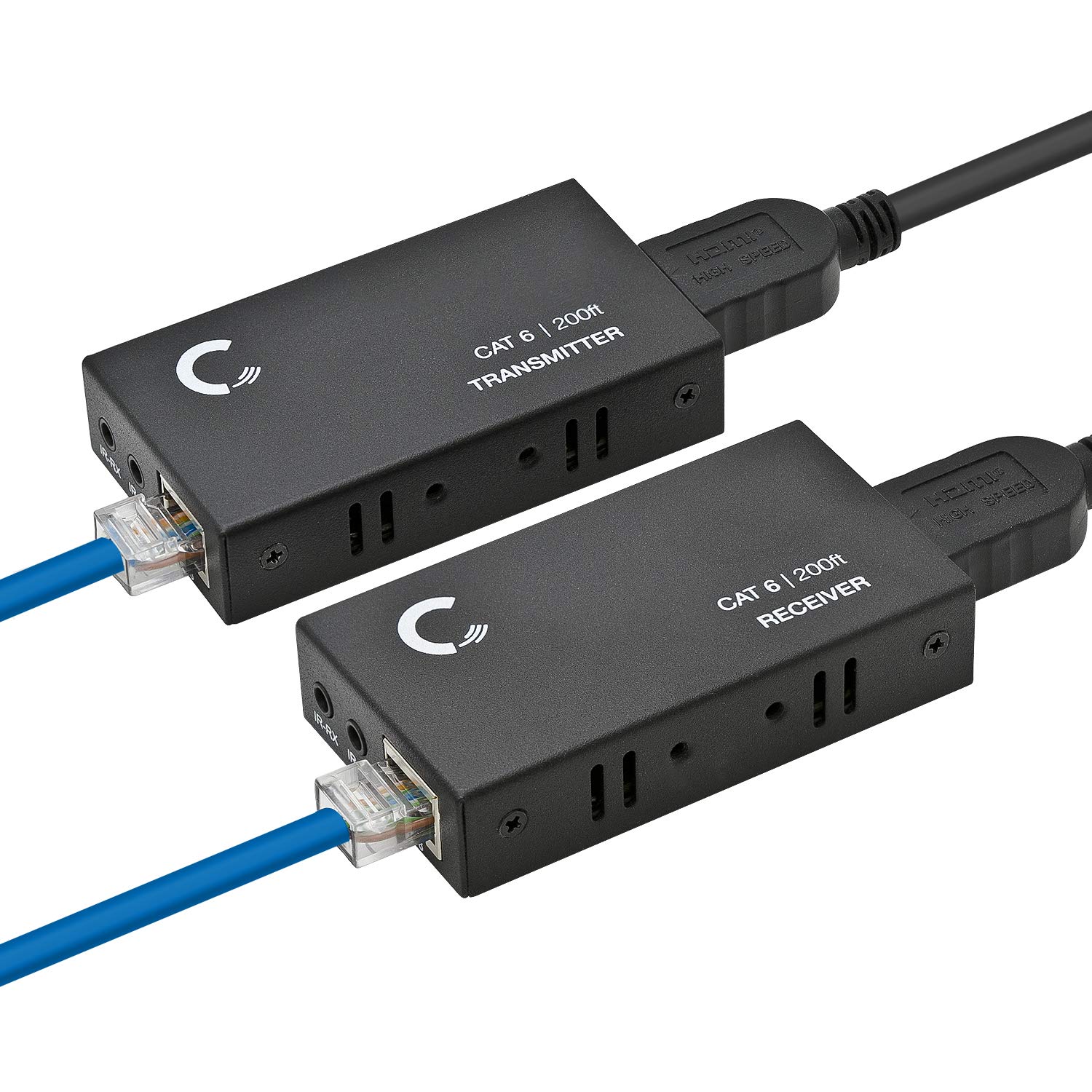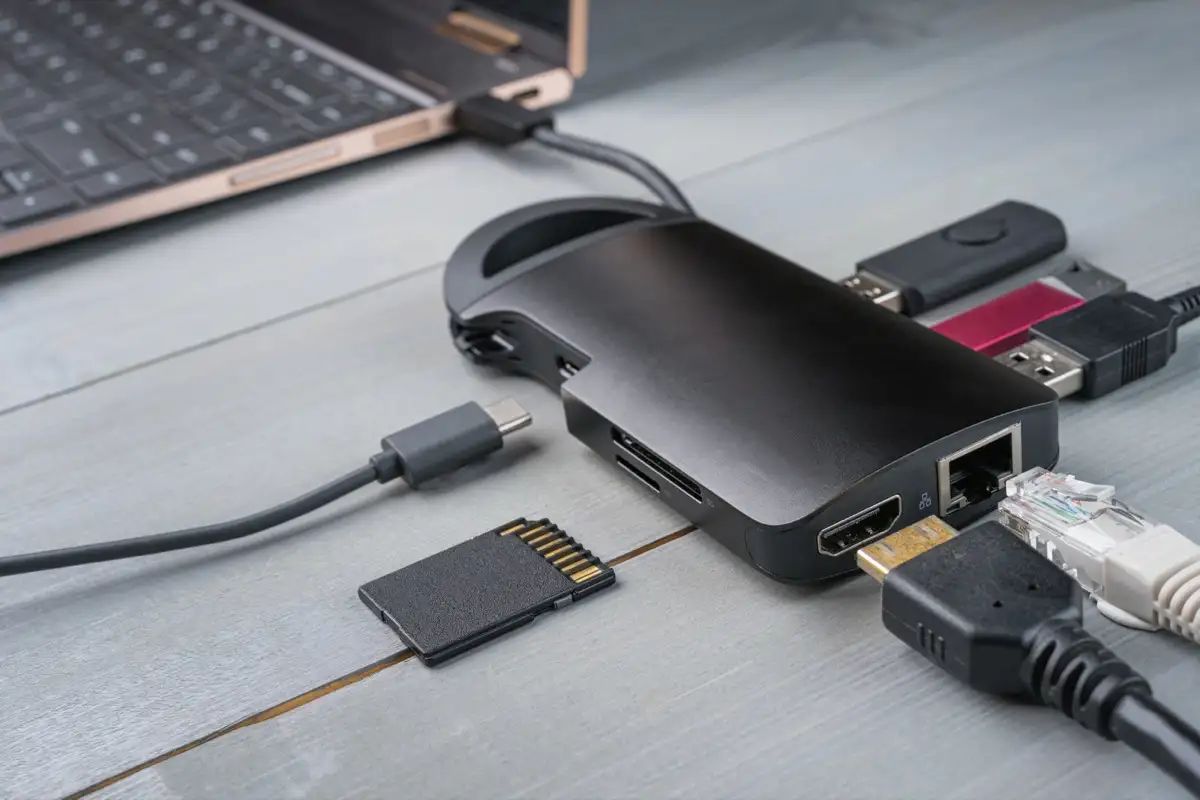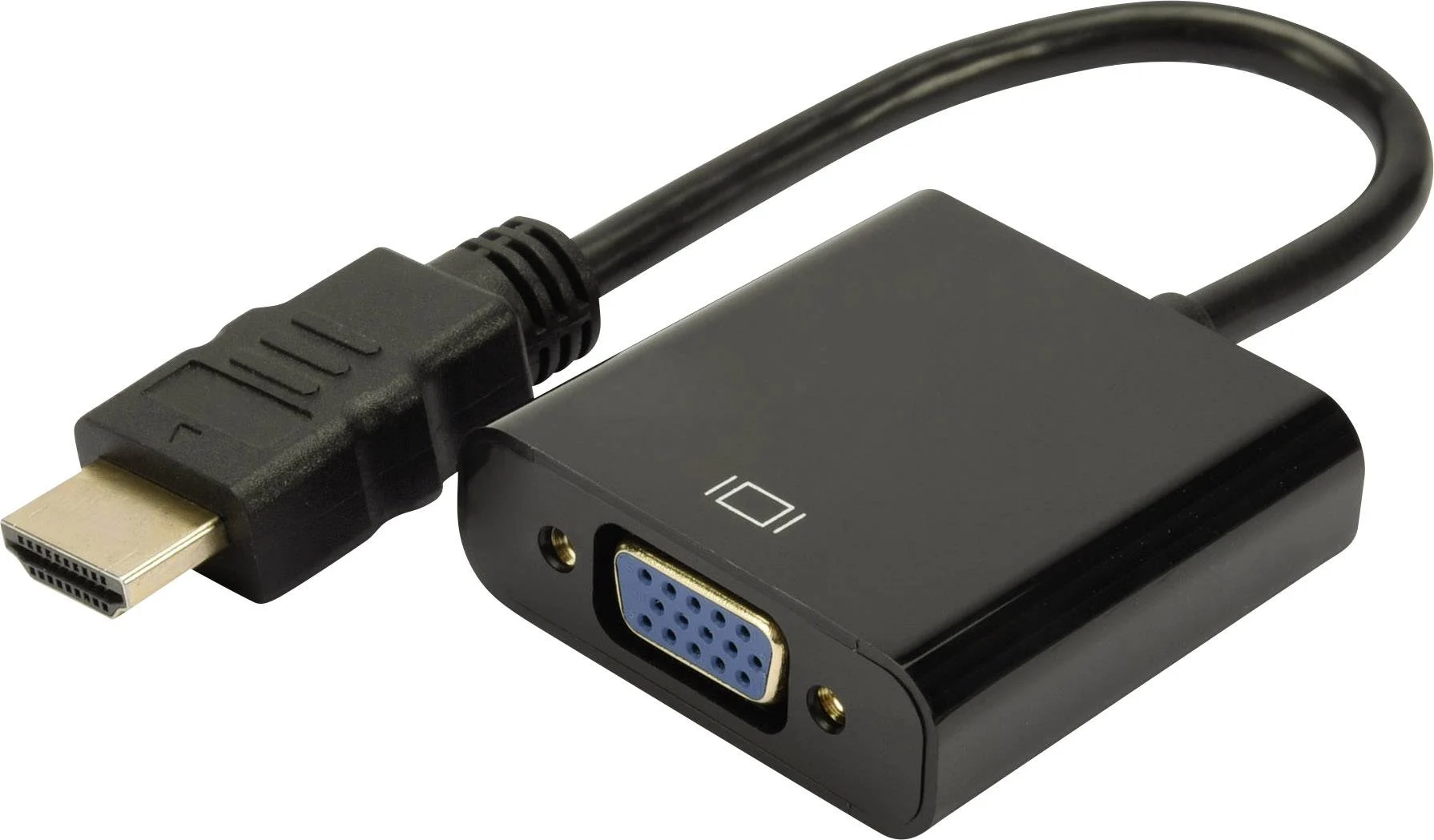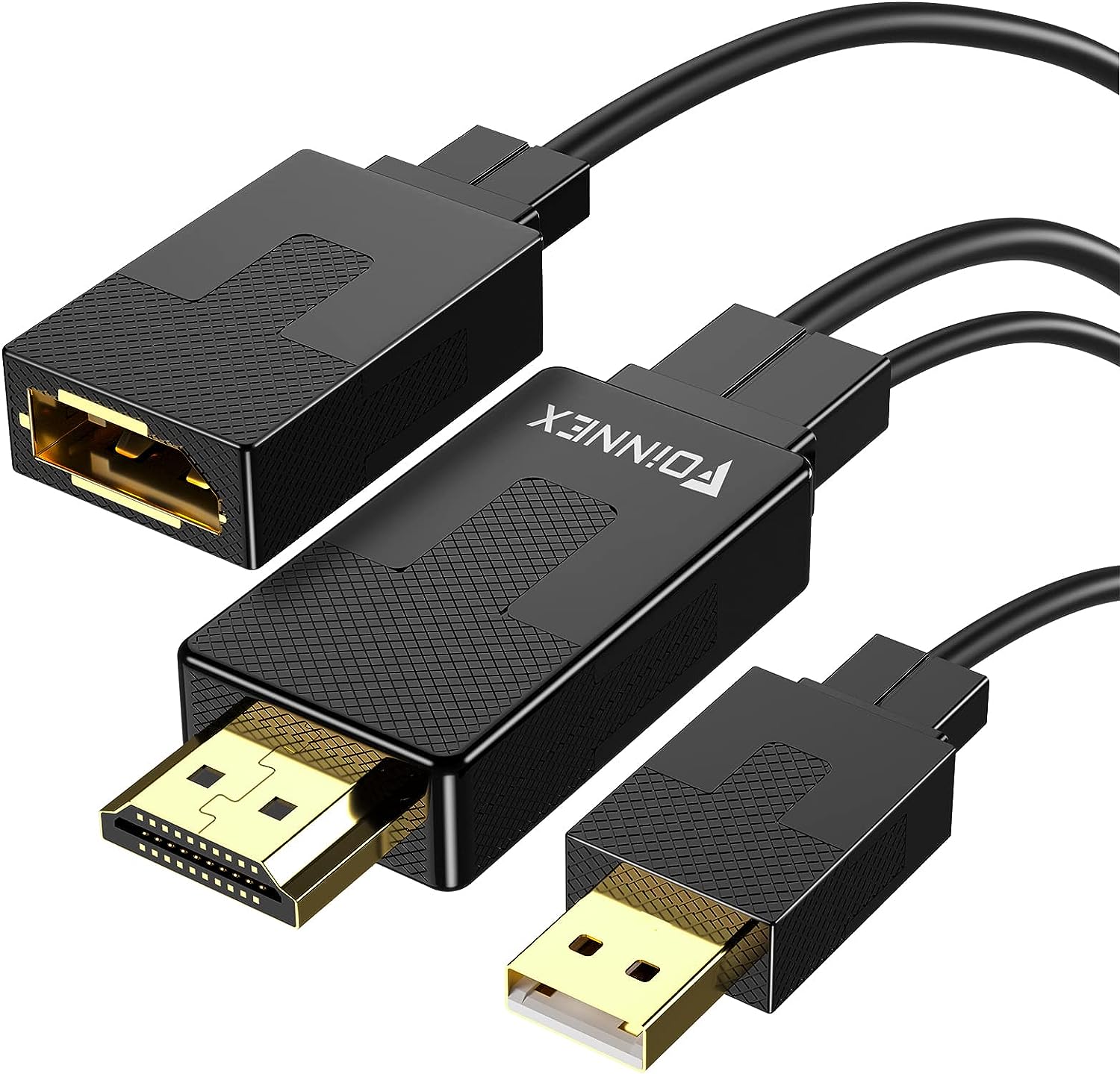Introduction
Welcome to the captivating world of HDMI extenders! Have you ever wished you could effortlessly extend the reach of your HDMI signal to enjoy high-quality audio and video in distant areas of your home or office? Look no further, as HDMI extenders are the perfect solution to all your audiovisual extension needs.
HDMI, which stands for High-Definition Multimedia Interface, has become the standard input and output interface for transmitting video and audio signals in the digital age. However, the limitations of HDMI cable lengths can be a hindrance when it comes to connecting devices in separate rooms or extending the signal over long distances. This is where HDMI extenders come to the rescue.
An HDMI extender is a device that allows you to transmit the HDMI signal over longer distances using various transmission technologies such as Cat5e/6 cables, fiber optics, or wireless connections. By employing these extenders, you can connect devices like televisions, projectors, gaming consoles, or Blu-ray players to a display or audio system located far away.
But how exactly do HDMI extenders work their magic? HDMI extenders are designed to receive the HDMI signal from the source device, convert it into a format suitable for transmission, and then send it through the chosen transmission medium to the receiving end. At the receiving end, the extender reconverts the signal back to its original HDMI format for display or processing.
HDMI extenders come in various types, each with its own unique capabilities and transmission technologies. Some extenders utilize Cat5e/6 cables to transmit the HDMI signal, while others employ fiber optics for long-distance transmission or wireless technology for greater flexibility. The type of extender you choose depends on your specific needs and the distance you want to cover.
Now that we have a general understanding of HDMI extenders and their functionality, let’s dive into the plethora of benefits they offer. From enabling multi-room setups to providing seamless AV distribution, HDMI extenders revolutionize our audiovisual experience and open up new possibilities. In the following sections, we will explore these benefits in detail, as well as important factors to consider when purchasing an HDMI extender and common troubleshooting tips for any issues you might encounter.
What is HDMI?
Before we delve deeper into HDMI extenders, let’s first understand what HDMI actually is. HDMI, which stands for High-Definition Multimedia Interface, is a standard interface for transmitting uncompressed audio and video data between devices. It has become the go-to connection method for modern audiovisual equipment.
HDMI supports high-definition video resolutions, including 720p, 1080p, and even 4K Ultra HD, providing crystal-clear visuals with vibrant colors and sharp details. It also supports various audio formats, from stereo to multi-channel surround sound, allowing for immersive audio experiences.
HDMI technology offers several advantages over its predecessors, such as analog connections like VGA or component cables. One of the key benefits of HDMI is digital transmission, which ensures a lossless transfer of both video and audio signals. This results in a superior picture and sound quality compared to analog connections, which can be susceptible to interference and signal degradation.
Another notable feature of HDMI is its ability to transmit both video and audio signals through a single cable. In the past, separate cables were required for video and audio connections, leading to a clutter of wires behind televisions and home theaters. HDMI simplifies and streamlines the connectivity process, providing a single cable solution for all audiovisual needs.
Furthermore, HDMI is a highly versatile interface that supports a wide range of devices, including televisions, monitors, projectors, gaming consoles, Blu-ray players, and audio receivers. This compatibility makes HDMI the standard connectivity option across different audiovisual products and ensures seamless interoperability.
Over the years, HDMI has evolved with the advancements in audiovisual technology. The latest iterations of HDMI, such as HDMI 2.0 and HDMI 2.1, bring new features like support for higher refresh rates, increased bandwidth for higher resolutions, and enhanced audio capabilities.
Overall, HDMI has transformed the way we connect and experience audiovisual content. Its digital transmission, superior quality, single-cable convenience, and broad compatibility make it an indispensable connection standard in today’s digital world.
What is an HDMI Extender?
An HDMI extender is a device that enables the extension of HDMI signals over longer distances than the standard cables allow. It acts as a bridge between the source device, such as a media player or gaming console, and the display device, like a television or projector, allowing you to transmit high-quality audio and video signals across greater distances.
Typically, HDMI cables have limitations when it comes to length, with the maximum recommended length being around 50 feet (15 meters) for a standard HDMI cable. However, in many scenarios, you may need to connect devices that are located far apart, such as different rooms, floors, or even buildings. This is where HDMI extenders come into play, offering a solution to extend the HDMI signal to reach these distant locations.
An HDMI extender works by taking the HDMI signal from the source device and transmitting it to the display device through cables or other transmission mediums. The extender consists of two main components: a transmitter (also known as a sender) and a receiver. The transmitter connects to the source device and converts the HDMI signal into a format suitable for transmission. The receiver connects to the display device and converts the received signal back to its original HDMI format for display or processing.
HDMI extenders utilize various transmission technologies to extend the HDMI signal. The most common types of extenders use Cat5e/6 or Cat6a cables for transmission. These extenders convert the HDMI signal into a format that can be transmitted over long-range Ethernet cables, which are more flexible and cost-effective in longer distance applications compared to standard HDMI cables.
Additionally, there are HDMI extenders that employ fiber optic technology, allowing for even longer transmission distances with minimal signal degradation. Fiber optic HDMI extenders are ideal for applications that require ultra-long-distance signal transmission, such as auditoriums or corporate AV installations.
Another type of HDMI extender utilizes wireless transmission, enabling greater flexibility in connecting devices without the need for long cables. Wireless HDMI extenders typically employ radio frequencies or Wi-Fi technology to transmit the HDMI signal between the transmitter and the receiver. These wireless extenders are particularly useful in situations where it’s impractical or not feasible to run cables.
Overall, HDMI extenders provide a convenient and reliable solution to extend the reach of HDMI signals, allowing you to connect and display audiovisual content over longer distances. Whether you’re setting up a home theater, conference room, or digital signage display, HDMI extenders offer the flexibility and versatility needed to achieve your audiovisual connectivity goals.
How does an HDMI Extender Work?
Understanding how an HDMI extender works can help demystify the process of extending HDMI signals over longer distances. Whether you’re using a Cat5e/6, fiber optic, or wireless HDMI extender, the basic principles remain the same.
An HDMI extender consists of two main components: a transmitter (sender) and a receiver. The transmitter is connected to the source device, such as a Blu-ray player or gaming console, using a standard HDMI cable. The receiver is connected to the display device, such as a television or projector, using another HDMI cable. These cables establish the initial connection between the source and display devices.
Once the initial connection is established, the transmitter extracts the audio and video signals from the HDMI cable connected to the source device. It then converts these signals into a format suitable for transmission over the chosen medium, whether it’s Cat5e/6 cables, fiber optics, or wireless technology.
If you’re using a Cat5e/6 HDMI extender, the transmitter converts the HDMI signals into a compatible format for transmission over Ethernet cables. These Ethernet cables are capable of carrying the converted signal over longer distances, ensuring that the audio and video signals reach the receiver without degradation. At the receiver end, the converted signals are reconverted back to their original HDMI format for display or processing.
Similarly, if you’re using a fiber optic HDMI extender, the transmitter converts the HDMI signals into an optical format compatible with fiber optic cables. These cables are capable of transmitting the optical signals over much longer distances without any loss of quality. At the receiver end, the optical signals are converted back to HDMI signals for display or processing.
If you’ve opted for a wireless HDMI extender, the transmitter wirelessly transmits the HDMI signals to the receiver using radio frequencies or Wi-Fi technology. These wireless signals carry the audio and video data from the source device to the receiver, allowing for greater flexibility in connecting devices without the need for physical cables.
The receiver, regardless of the transmission medium used, performs the inverse process of the transmitter. It receives the transmitted signals and reconverts them back to their original HDMI format. This allows the display device to accurately reproduce the audio and video without any loss in quality.
It’s important to note that different HDMI extenders may have additional features, such as the ability to transmit infrared (IR) signals for remote control functionality or support for specific audio and video formats. However, the core functionality of an HDMI extender remains the same: to transmit HDMI signals over longer distances.
By leveraging the capabilities of HDMI extenders, you can seamlessly extend the reach of your audiovisual content, enabling multi-room setups, digital signage displays, or flexible conference room configurations.
Types of HDMI Extenders
HDMI extenders come in various types, each utilizing different transmission technologies to extend the HDMI signal over longer distances. Understanding the different types of HDMI extenders can help you choose the one that best suits your specific needs and requirements.
1. Cat5e/6 HDMI Extenders: Cat5e/6 HDMI extenders are one of the most common types available. These extenders utilize Cat5e or Cat6 Ethernet cables for transmission. The HDMI signal from the source device is converted into a compatible format for transmission over the Ethernet cables. Cat5e/6 extenders are suitable for distances up to 330 feet (100 meters) and offer a cost-effective and reliable solution for extending HDMI signals.
2. Cat6a/7 HDMI Extenders: Cat6a/7 HDMI extenders are an upgraded version of Cat5e/6 extenders, capable of transmitting HDMI signals over longer distances. They utilize Cat6a or Cat7 Ethernet cables, which have better shielding and higher data transfer rates. These extenders are ideal for professional installations or larger setups requiring distances beyond the capabilities of Cat5e/6 extenders.
3. Fiber Optic HDMI Extenders: Fiber optic HDMI extenders use fiber optic cables for transmission, allowing for even longer distances without signal degradation. Fiber optic technology provides high-speed and reliable transmission over long-range distances, making it suitable for applications that require signal extension over 1,000 feet (300 meters) or more. Fiber optic extenders offer excellent immunity to electromagnetic interference and are commonly used in large venues, auditoriums, and commercial installations.
4. Wireless HDMI Extenders: Wireless HDMI extenders provide the flexibility of transmitting HDMI signals without the need for physical cables. These extenders utilize radio frequencies or Wi-Fi technology to wirelessly transmit the audio and video signals between the transmitter and receiver units. Wireless HDMI extenders are ideal for situations where running cables is impractical or not feasible, such as temporary setups or installations in historical buildings.
5. HDBaseT Extenders: HDBaseT is a connectivity standard that combines various audiovisual signals, including HDMI, audio, control, and power, into a single Cat5e/6 cable. HDBaseT extenders allow for the transmission of high-quality audio and video signals alongside Ethernet, control, and power signals over long distances up to 328 feet (100 meters). HDBaseT technology simplifies installations by reducing cable clutter and providing a single consolidated solution for AV distribution.
When selecting an HDMI extender, consider factors such as the transmission distance you need to cover, the type of cables or technology you prefer to use, and any additional features you may require, such as IR control or support for specific audio and video formats.
By understanding the different types of HDMI extenders and their capabilities, you can choose the most suitable option that meets your specific audiovisual extension needs.
Benefits of Using an HDMI Extender
Using an HDMI extender offers several benefits that enhance your audiovisual experience and provide greater flexibility in connecting devices over longer distances. Let’s explore some of the key advantages of using an HDMI extender:
1. Extended Reach: The primary benefit of an HDMI extender is the ability to extend the reach of your audio and video signals. Whether you want to connect devices in separate rooms, different floors, or even across large spaces, an HDMI extender allows you to bridge the distance and transmit high-quality signals without loss or degradation.
2. High-Quality Audio and Video: HDMI extenders preserve the high-definition audio and video quality of your content. They ensure that signals are transmitted without any loss, providing crisp visuals and immersive sound, just like you would experience with a direct HDMI connection.
3. Multiple Room Setups: With HDMI extenders, you can create multi-room setups for entertainment systems or home theaters. By extending the HDMI signal to different rooms, you can connect and enjoy your favorite shows, movies, or gaming consoles in any part of your home without the need for separate devices in each room.
4. Flexible Display Options: HDMI extenders allow you to connect displays such as televisions, projectors, or monitors to your source device from any location. This flexibility enables you to choose the most suitable display option for different scenarios, such as using a portable projector for outdoor movie nights or connecting multiple screens for business presentations.
5. Centralized AV Distribution: HDMI extenders enable centralized audiovisual distribution, especially when combined with distribution hubs or matrix switchers. You can have a central location where all source devices are connected, and the HDMI extenders transmit the signals to various displays or rooms. This centralized setup simplifies cable management, reduces clutter, and provides efficient control over your audiovisual system.
6. Commercial Applications: HDMI extenders find significant utility in commercial settings, such as conference rooms, classrooms, or retail spaces. They allow for seamless connectivity between presentation devices, projectors, or digital signage displays, ensuring that important audiovisual content is displayed with clarity and precision.
7. Wireless Convenience: Wireless HDMI extenders provide the convenience of transmitting signals without the need for physical cables. They offer more flexibility in device placement and enable hassle-free setups, especially in scenarios where running cables is impractical or challenging.
8. Cost-Effective Solution: HDMI extenders provide a cost-effective solution compared to alternative methods of extending HDMI signals, such as using long HDMI cables or installing complex AV distribution systems. With an HDMI extender, you can achieve extended reach without the expense and effort involved in other solutions.
By taking advantage of the benefits offered by HDMI extenders, you can elevate your audiovisual setup, create versatile multi-room configurations, and enjoy high-quality content in any part of your home or workplace.
Factors to Consider When Buying an HDMI Extender
When purchasing an HDMI extender, it’s essential to consider several factors to ensure that you choose the right device for your specific needs. Here are some key factors to consider before making your buying decision:
1. Transmission Distance: Determine the distance you need to cover between the source device and the display device. Different HDMI extenders have varying maximum transmission distances, so ensure that the extender you choose can cover the required distance without signal degradation.
2. Transmission Technology: HDMI extenders utilize different transmission technologies, including Cat5e/6 cables, fiber optics, and wireless. Consider the pros and cons of each technology and choose the one that best suits your requirements in terms of distance, flexibility, and setup convenience.
3. Compatibility: Ensure that the HDMI extender is compatible with your source device and display device. Check the supported HDMI versions, audio and video formats, and resolution capabilities of the extender to ensure seamless compatibility with your existing equipment.
4. Audio and Video Quality: Look for HDMI extenders that support high-definition video resolutions and audio formats to ensure a superior audiovisual experience. Pay attention to factors such as bandwidth, refresh rates, color depth, and audio channel support to ensure that the extender can deliver the quality you desire.
5. Additional Features: Consider any additional features that may be important for your setup. These can include IR control, bi-directional transmission, support for CEC (Consumer Electronics Control), or the ability to transmit other control signals along with the HDMI signal. Assess your specific requirements and choose an extender that meets your needs.
6. Ease of Installation: Consider the ease of installation and setup. Look for HDMI extenders that provide user-friendly installation processes and clear instructions. Some extenders may require additional power adapters or special configurations, so ensure that you are comfortable with the setup process.
7. Budget: Determine your budget and consider the cost-effectiveness of the HDMI extender. Compare prices, features, and performance across different models to find the best value for your investment. Remember to strike a balance between affordability and the desired functionality.
8. Customer Reviews: Read customer reviews and ratings for the HDMI extender you are considering. Real-world experiences can provide valuable insights into the performance, reliability, and overall satisfaction of the product. Consider both positive and negative feedback to make an informed decision.
By carefully considering these factors, you can select an HDMI extender that meets your specific requirements and ensures a seamless and reliable audiovisual transmission experience.
Setting up an HDMI Extender
Setting up an HDMI extender requires a few simple steps, regardless of the type of extender you have chosen. Follow these general guidelines to ensure a smooth installation and proper configuration:
1. Prepare your equipment: Gather all the necessary equipment, including the HDMI extender, HDMI cables, and power adapters (if required). Ensure that your source device and display device are powered off during the setup process.
2. Connect the transmitter and source device: Connect one end of the HDMI cable to the HDMI output port of your source device, such as a media player or gaming console. Connect the other end of the HDMI cable to the HDMI input port of the transmitter unit on the HDMI extender.
3. Connect the receiver and display device: Connect one end of another HDMI cable to the HDMI output port of the receiver unit on the HDMI extender. Connect the other end of the HDMI cable to the HDMI input port of your display device, such as a TV or projector.
4. Connect network cables or other transmission mediums (if applicable): If you are using a Cat5e/6 or fiber optic HDMI extender, connect the corresponding network cables or fiber optic cables to the transmitter and receiver units. Ensure a secure and proper connection.
5. Power on the devices: Connect the power adapters to the transmitter and receiver units, if required. Plug them into a power outlet and power on both units. Allow sufficient time for the extender to initialize and establish a connection.
6. Adjust settings (if necessary): Some HDMI extenders may require you to adjust specific settings, such as signal conversion, resolution, or audio output. Consult the user manual provided with your extender to understand any customizable settings and make adjustments accordingly.
7. Test the connection: Power on your source device and display device. Verify that the video and audio signals are transmitting correctly from the source device to the display device via the HDMI extender. Check for any flickering, distortion, or loss of signal. Make any necessary adjustments or troubleshoot any issues as required.
8. Secure the connections: Once you have confirmed that the HDMI extender is functioning correctly, ensure that all connections are secure. Avoid placing stress on the cables and ensure they are properly positioned to prevent accidental disconnections or damage.
Keep in mind that specific setup instructions may vary depending on the brand and model of your HDMI extender. Always refer to the user manual provided by the manufacturer for detailed setup instructions specific to your extender.
By following these general guidelines, you can successfully set up your HDMI extender and enjoy extended reach for your audiovisual content.
Common Issues with HDMI Extenders and Troubleshooting Tips
While HDMI extenders are generally reliable devices, you may encounter occasional issues during setup or operation. Here are some common issues that users may experience with HDMI extenders and troubleshooting tips to help resolve them:
1. No signal or weak signal: If you’re not receiving any signal or experiencing a weak signal after setting up your HDMI extender, check the connections first. Ensure that all HDMI cables, network cables (if applicable), and power connections are securely in place. If the issue persists, try using different HDMI cables or swapping the transmitter and receiver units to identify if any of the components are faulty.
2. Loss of audio or video quality: If you encounter a loss of audio or video quality, make sure that the HDMI cables are high-quality and capable of transmitting the desired resolution and audio formats. Ensure that all HDMI ports and connectors are clean and free from dirt or debris that may cause signal degradation. Adjust the resolution settings of your source device and display device to ensure they are compatible and optimized.
3. Interference or noise: Interference or noise can affect the signal quality of HDMI extenders. Keep the cable lengths as short as possible to minimize the chances of interference. If using a Cat5e/6 HDMI extender, ensure that the cables are properly shielded. In case of wireless HDMI extenders, ensure that they are not placed near other devices that may emit radio frequencies or strong electromagnetic fields.
4. Compatibility issues: Compatibility issues may arise if the HDMI extender is not compatible with the specific audio or video formats of your source or display devices. Ensure that the extender supports the HDMI version, resolution, and audio formats required by your devices. Update the firmware of your HDMI extender if newer versions become available, as these updates often address compatibility issues.
5. IR control problems: If your HDMI extender supports IR control for devices, issues with remote control functionality can occur. Ensure that the IR emitters on the transmitter and receiver units are properly aligned with the IR receiver of the source and display devices. If the extender includes an IR receiver and emitter cable, ensure they are connected correctly and positioned correctly for optimal IR signal transmission.
6. Power-related issues: If the HDMI extender is not powering on or experiencing intermittent power issues, check the power connections and ensure that the power outlets are functioning correctly. Make sure that the power adapter is the correct voltage and wattage for the extender. If using a Cat5e/6 or fiber optic extender, ensure that the network or fiber optic cables are properly connected and providing power to the extender units, if required.
7. Resetting the extender: If you encounter persistent issues, try resetting the HDMI extender. Refer to the user manual for instructions on how to perform a reset. This can help resolve certain issues, including firmware glitches or configuration errors.
If you’ve tried troubleshooting these common issues and are still experiencing problems, reach out to the manufacturer’s customer support for further assistance. They can provide specific guidance based on the model and brand of your HDMI extender.
By following these troubleshooting tips, you can address common issues with HDMI extenders and ensure a smooth and optimal audiovisual experience.
Conclusion
HDMI extenders have revolutionized our ability to transmit high-quality audio and video signals over longer distances with ease. These devices offer a range of benefits, including extended reach, high-quality audio and video transmission, multi-room setups, and flexible display options. By understanding the different types of HDMI extenders available, such as Cat5e/6, fiber optic, and wireless, you can select the one that best suits your specific needs.
When purchasing an HDMI extender, consider factors such as transmission distance, compatibility, audio and video quality, additional features, ease of installation, and your budget. These considerations will help you find the perfect extender that meets your requirements and provides the desired functionality.
Setting up an HDMI extender involves connecting the transmitter and receiver units correctly, ensuring secure connections and power supply, and adjusting settings as necessary. By following the installation guidelines and referring to the user manual, you can easily set up your HDMI extender and enjoy extended reach for your audiovisual content.
While HDMI extenders are generally reliable, it’s important to be aware of common issues that may arise. By troubleshooting issues such as no signal, loss of audio or video quality, interference, compatibility problems, IR control issues, power-related problems, and performing resets if necessary, you can overcome these challenges and optimize the performance of your HDMI extender.
In conclusion, HDMI extenders provide a convenient and efficient solution for extending HDMI signals over long distances. They empower us to create versatile audiovisual setups, connect devices in multiple rooms, and enhance our overall viewing and listening experiences. With the right HDMI extender and proper setup, you can elevate your audiovisual capabilities and enjoy seamless connectivity across your home or workplace.







